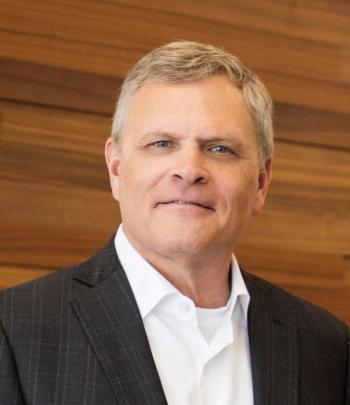
Physicians dissatisfied with patient satisfaction surveys
Patient feedback is important, but becomes problematic when linked to pay, doctors say.
The hippocratic oath doesn’t refer to patients’ happiness, but their satisfaction is an increasingly important factor in how physicians treat their patients and, in turn, how physicians themselves are treated by their employers, insurers and peers. Patient satisfaction surveys can even decide the course of a physician’s career and earnings.
The increased emphasis on patient satisfaction raises questions about how physicians should integrate patients’ feelings, perceptions and expectations into their treatment decisions and what to do if the patient wants something the doctor doesn’t want to provide or thinks is inappropriate. Give in and keep the patient happy or follow their medical judgement and risk a poor score on a satisfaction survey?
The danger, says John Bulger, DO, president of the American College of Osteopathic Internists (ACOI), comes if physicians pursue high satisfaction scores at the expense of the appropriate care.
“If you’re using this for practice improvement, I think that’s fine,” he says. “If it’s being used for accountability by other groups, that changes the survey and if people are competing on the survey to perform better, that’s teaching to the test.”
Feeling the pressure
One indication of how much physicians feel their decisions are affected by patient surveys can be found in 2013 research by the Ohio State Medical Association (OSMA), in conjunction with the Cleveland Clinic Foundation.
More than three-quarters of respondents (78.4%) agreed or strongly agreed that the emphasis on patient satisfaction is causing providers to overuse expensive testing. And 58.5% reported that pressure from hospital administrators to improve patient satisfaction regarding the treatment of pain had increased.
Asked whether the emphasis on patient satisfaction with pain control is leading physicians to over-prescribe controlled substances, 73.8% of respondents agreed or strongly agreed. However, only 24.5% agreed or strongly agreed that they themselves tended to over-prescribe controlled substances.
Others dispute that concern over patient surveys compromise care. “I don’t think most MDs are going to compromise their medical ethics and judgement to err on the side of patient satisfaction. I don’t see the [scores] entering into care discussions,” says Cheryl Peaslee, RN, MBA, vice president of risk management for Medical Mutual of Maine, which insures physicians, hospitals and other healthcare facilities and coaches them in how to improve on the surveys.
None of the physicians interviewed for this article say they place patient satisfaction above medical best practices, but they all report feeling pressure from patients.
Does improving patient satisfaction lead to better care? The evidence isn’t clear. A 2012 study published in the Archives of Internal Medicine found that higher patient satisfaction was associated with less emergency department use, but with greater inpatient use, higher overall healthcare and prescription drug expenditures and increased mortality.
“Satisfied patients are more adherent to physician recommendations and more loyal to physicians, but research suggests a tenuous link between patient satisfaction and health care quality and outcomes,” the authors concluded.
A 2015 paper published in the journal of the Hastings Center, a bioethics research institute, warned that striving for patient satisfaction could hurt healthcare quality.
“The pursuit of high patient-satisfaction scores may actually lead health professionals and institutions to practice bad medicine by honoring patient requests for unnecessary and even harmful treatments,” the authors wrote.
Press Ganey, the nation’s largest patient survey company, disagrees. Thomas Lee, MD, chief medical officer of Press Ganey and an internist at Brigham and Women’s Hospital in Boston, cites studies concluding that hospitals with high scores on the Hospital Consumer Assessment of Healthcare Providers and Systems (HCAHPS) survey have better clinical outcomes.
Though their ultimate effect on patient care is in dispute, patient satisfaction surveys have become a fact of life for more and more physicians as they are increasingly required by payers and linked to reimbursement.
Using the surveys
Physicians who work for hospitals and large healthcare systems have no choice but to deal with HCAPHS and the Consumer Assessment of Healthcare Providers and Systems (CAHPS) surveys, but smaller practices have more leeway.
Lucy Hornstein, MD, a solo primary care physician in suburban Philadelphia, rejects surveys completely, saying she doesn’t have the time or the inclination to deal with them. “I think I’m open to my patients and if they’re dissatisfied, they can go somewhere else,” she says.
Hornstein accepts all insurers but Medicaid, and says she’s willing to incur payment penalties rather than go to the trouble and expense of conducting surveys. Her electronic health record (EHR) automatically surveys some patients, but she says she doesn’t pay attention to the results because she knows what her patients think about their care.
She adds that after 27 years in practice, she is unlikely to change how she does things. “None of this has anything to do with actual medicine,” she says.
By contrast, Access Healthcare, a three-physician practice in Apex, North Carolina, is highly responsive to the surveys. The direct patient care practice uses a modified CAHPS survey, says medical director Brian Forrest, MD.
The practice replaced its nurse practitioners with physicians because the surveys revealed that patients were disappointed by not seeing a doctor, Forrest says. In another instance, he dropped the price of a test when a patent mentioned it was cheaper at a nearby hospital.
“You have to pay attention,” he says. “You think you have excellent customer service, but you might be doing something that annoys people, and you’re unaware of it.”
The opioid crisis
Some experts say an emphasis on reducing patient pain in order to get higher scores on surveys contributes to the opioid epidemic.
Few physicians are more familiar with the opioid crisis than Joan Papp, MD, FACEP, an emergency department physician at MetroHealth Medical Center in Cleveland and assistant professor of emergency medicine at Case Western Reserve University School of Medicine. In 2013, she founded Project Dawn, which has been credited with saving dozens of lives by distributing kits containing Naloxone to reverse the effects of heroin overdoses.
Earlier this year, in a column for the American Medical Association, Papp linked physician concern over patient satisfaction surveys, particularly the questions about pain management, to over-prescribing controlled substances, which can lead to patients getting addicted to heroin and other painkillers.
In an interview with Medical Economics, Papp says she has been pressured by patients to prescribe unnecessary painkillers. “I have had experiences where they have told me that if they don’t get the pain medication, they’re going to write a letter or that sort of thing,” she says.
While there is no direct evidence showing that satisfaction surveys have contributed to the opioid crisis, the Centers for Medicare & Medicaid Services (CMS) has listened.
In July, citing the objections of physicians, CMS proposed decoupling the HCAHPS survey questions regarding pain management from hospital payments “in order to mitigate even the perception that there is financial pressure to overprescribe opioids.”
Surveys and pay
The incentives for doctors to prioritize patient satisfaction are likely to grow as more healthcare systems link pay to patient satisfaction surveys, a prospect not welcomed by most physicians.
An overwhelming majority of those (86%) surveyed by OSMA disagreed or strongly disagreed that linking their compensation to patient satisfaction scores produced high-quality, cost-effective medical care.
“I think measuring is important, but it’s what you do with it that matters. If [patient surveys are] used as a carrot, that can be very good; if it’s used as a stick, that can be a problem,” says the ACOI’s Bulger.
Tying pay to satisfaction scores could lead to physicians deciding treatments based on what makes patients happier, he says.
That possibility is one of the things Alpesh Amin, MD, MACP, watches for. He is executive director of the hospitalist program at UC Irvine Health, which uses satisfaction surveys to make decisions about physicians’ pay, bonuses and re-credentialing. He is used to hearing criticism of the surveys from the 20 physicians he supervises: the sample sizes are too small, there is a bias toward unhappy respondents, the scores don’t reflect quality of care, etc.
Amin agrees the surveys are flawed, but asks: “What other recourse do you have when CMS and others are tying payments to the process?”
Press Ganey’s Lee says it’s up to each provider organization to decide whether to link satisfaction surveys to pay, but adds, “I feel financial incentives are best used for financial issues, and non-financial incentives (peer pressure, transparency) are best used for quality. Financial incentives for quality tend to produce efforts to define a ‘floor’ that every doctor can reach, rather than support everyone to get better than they currently are.”
Improving healthcare
Johns Hopkins Hospital in Baltimore, Maryland, does not tie patient satisfaction surveys to pay, but uses the scores to improve performance, says Stephen Sisson, MD, executive director of ambulatory services and governor of the Maryland chapter of the American College of Physicians. He thinks the surveys have improved care, and uses himself as an example.
Patient surveys revealed that patients thought he kept them waiting too long. “When I saw the Press Ganey score, I said ‘I need to rethink this,’” he says.
Sisson and other survey supporters say the surveys can improve healthcare by improving patient-physician communication, which leads to a variety of benefits, including higher scores. “It’s all in how you handle the patient. There has to be trust and shared decision-making,” Sisson says.
“Physicians do want patients to understand and the ones who communicate the best generally have the best scores and have better outcomes,” says Thomas Jeffrey, MPH, president of SullivanLuallin Group, a San Diego consulting firm that administers satisfaction surveys and coaches practices on how to improve their scores.
Many physicians need to do a better job of communicating with patients, says Peaslee of Medical Mutual of Maine: “If it takes [patient satisfaction surveys] to point that out to them,that can be a help.”
Surveying the future
Despite physician opposition and some modifications to them, the patient satisfaction surveys are unlikely to go away.
The new physician payment system under the Medicare Access and CHIP Reauthorization Act of 2015 (MACRA) gives physicians the option of excluding patient satisfaction ratings from the formula used to calculate their reimbursement. MACRA combines three current quality and value reporting programs (PQRS, Value-Based Payment Modifier and the EHR Incentive Program) into the new Merit-based Incentive Payment System (MIPS).
PQRS ends in 2018. MIPS reporting will begin in 2017 and the data will affect Medicare reimbursements beginning in 2019. Practices can still opt to participate in a CAHPS survey as part of their quality reporting, which would count toward the overall score and affect reimbursement.
The key to benefiting from patient satisfaction surveys, according to Lee, is to use them to improve without becoming fixated on the scores.
“Physicians should not become paralyzed by the need to be perfect on any type of metric,” he says, “because patients are heterogeneous and no measure is going to make sense for every patient.”
Newsletter
Stay informed and empowered with Medical Economics enewsletter, delivering expert insights, financial strategies, practice management tips and technology trends — tailored for today’s physicians.
















